Caravaggio's Greatest Painting!
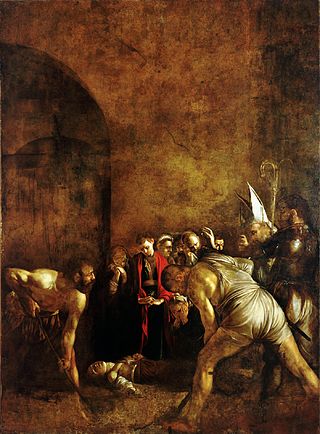 St Lucy is a 3rd-century saint, a virgin martyr who was venerated from the moment of her death and whose feast is celebrated on December 13th in both East and West. An account of her life can be found here. As with all worthy images intended for worship, we see in this portrayal of her (by the great 18th century Venetian, Tiepolo) we see an account of her story and the characteristics that identify her uniquely. So we see her receiving communion just at the moment of death caused by being stabbed in the throat. As the instrument of her death, the dagger is placed bottom right in the composition, along with her eyes on a plate. This latter symbol is most commonly associated with her, although it is developed relatively late, in the middle ages, linked to her name which is derived from the Latin word for light.
St Lucy is a 3rd-century saint, a virgin martyr who was venerated from the moment of her death and whose feast is celebrated on December 13th in both East and West. An account of her life can be found here. As with all worthy images intended for worship, we see in this portrayal of her (by the great 18th century Venetian, Tiepolo) we see an account of her story and the characteristics that identify her uniquely. So we see her receiving communion just at the moment of death caused by being stabbed in the throat. As the instrument of her death, the dagger is placed bottom right in the composition, along with her eyes on a plate. This latter symbol is most commonly associated with her, although it is developed relatively late, in the middle ages, linked to her name which is derived from the Latin word for light. 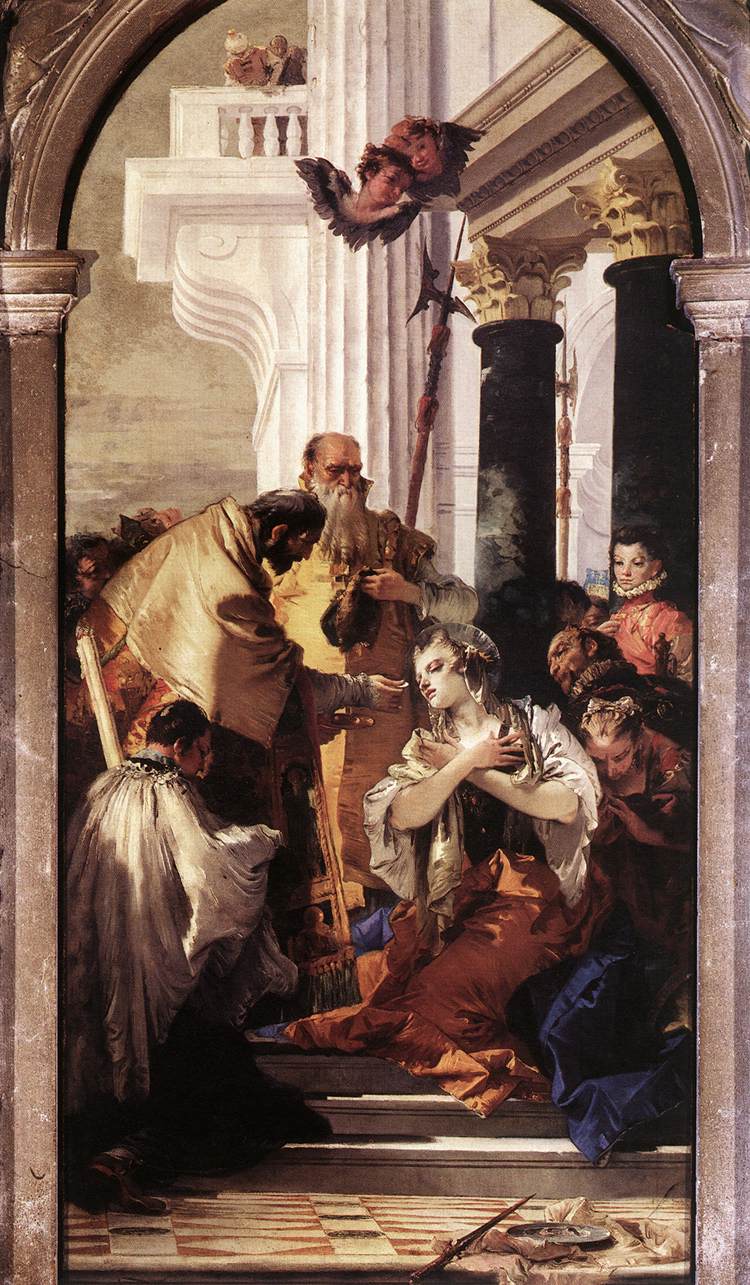 Other attributes we will see are a palm branch - which is appropriate to all martyrs - as seen in this famous Renaissance period painting by Francesco de la Cossa
Other attributes we will see are a palm branch - which is appropriate to all martyrs - as seen in this famous Renaissance period painting by Francesco de la Cossa  And, people struggling to move her. The consul Paschasius ordered that she be removed to a brothel and abused until she died. However, teams of men tried but failed to move her. We see this in the painting below in this 15th-century depiction. Teams of oxen are being used.
And, people struggling to move her. The consul Paschasius ordered that she be removed to a brothel and abused until she died. However, teams of men tried but failed to move her. We see this in the painting below in this 15th-century depiction. Teams of oxen are being used. 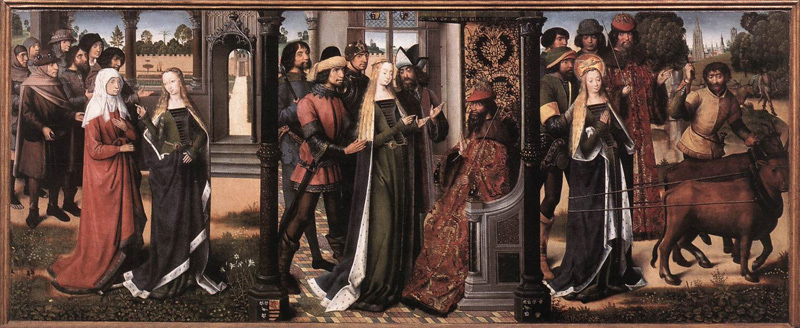 A tradition iconographic image has the saint holding a cross as a sign of martyrdom as in the beautiful fresco:
A tradition iconographic image has the saint holding a cross as a sign of martyrdom as in the beautiful fresco: 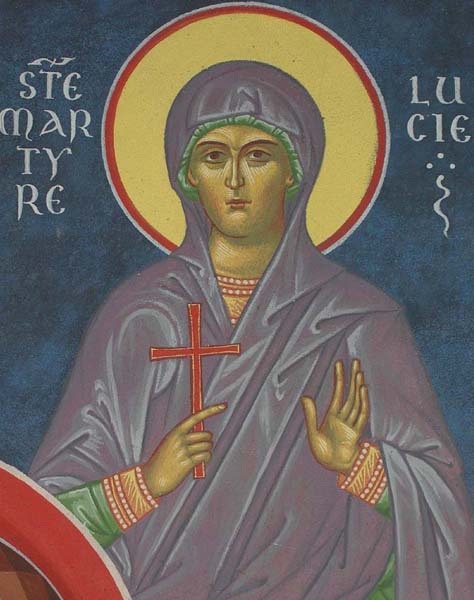 I finish with Caravaggio and his burial of St Lucy. This is a late painting done when he was in exile, so to speak, from Rome and living in Sicily, the home of St Lucy. It is an altarpiece and in my opinion, one of the most brilliant paintings he has done. I do not know if the stylistic development is by accident or design, but regardless I like the result. Notice how much more this reflects the developing baroque style than his early work. It is shrouded in more mystery, with disappearing edges, far more numinous monochrome rendering and less colouration than he might have painted in his youth. The composition is brilliant, with the arcs of the arcs of the limbs of the two figures in the foreground creating a mandorla, which frames the figure of St Lucy.
I finish with Caravaggio and his burial of St Lucy. This is a late painting done when he was in exile, so to speak, from Rome and living in Sicily, the home of St Lucy. It is an altarpiece and in my opinion, one of the most brilliant paintings he has done. I do not know if the stylistic development is by accident or design, but regardless I like the result. Notice how much more this reflects the developing baroque style than his early work. It is shrouded in more mystery, with disappearing edges, far more numinous monochrome rendering and less colouration than he might have painted in his youth. The composition is brilliant, with the arcs of the arcs of the limbs of the two figures in the foreground creating a mandorla, which frames the figure of St Lucy. 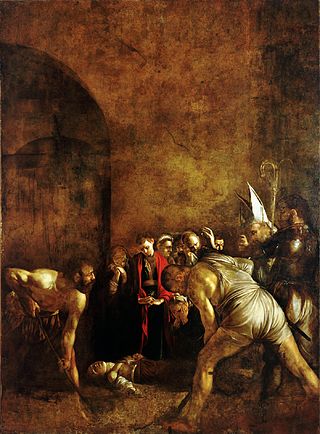 This is one of a series of articles written to highlight the great feasts and the saints of the Roman Canon. All are connected to a single opening essay, in which I set out principles by which we might create a canon of art for Roman Rite churches, and a schema that would guide the placement of such images in a church. (Read it here.) In these, I plan to cover the key elements of images of the Saints of the Roman Canon - Eucharistic Prayer I - and the major feasts of the year. I have created the tag Canon of Art for Roman Rite to group these together, should any be interested in seeing these articles as they accumulate. For the fullest presentation of the principles of sacred art for the liturgy, take the Master’s of Sacred Arts, www.Pontifex.University.
This is one of a series of articles written to highlight the great feasts and the saints of the Roman Canon. All are connected to a single opening essay, in which I set out principles by which we might create a canon of art for Roman Rite churches, and a schema that would guide the placement of such images in a church. (Read it here.) In these, I plan to cover the key elements of images of the Saints of the Roman Canon - Eucharistic Prayer I - and the major feasts of the year. I have created the tag Canon of Art for Roman Rite to group these together, should any be interested in seeing these articles as they accumulate. For the fullest presentation of the principles of sacred art for the liturgy, take the Master’s of Sacred Arts, www.Pontifex.University.